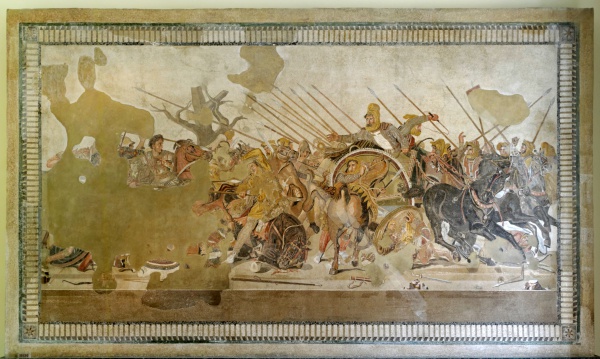Facts About The Alexander Mosaic
The Alexander Mosaic is a renowned Roman floor mosaic originating from the House of the Faun in Pompeii, dated around 100 BC. This exquisite work of art depicts a dramatic battle scene between Alexander the Great and Darius III of Persia. With dimensions of 2.72 by 5.13 meters, it seamlessly blends Italic, Hellenistic, and Roman artistic styles. Today, it is preserved in the Naples National Archaeological Museum. Experts believe it to be a reproduction of an earlier Hellenistic painting from the 3rd century BC.
The mosaic vividly captures the intensity of battle, featuring over 50 figures in dynamic action. At its center, Alexander the Great is shown charging at King Darius. Alexander is easily recognizable by his distinctive Roman nose and a breastplate adorned with Medusa. He rides his trusty horse, Bucephalus. Meanwhile, Darius, accompanied by his charioteer, appears anxious and fearful. The intricate details of the mosaic, including radical foreshortening and shading, imbue the chaotic scene with a naturalistic and dynamic feel.
Crafted using approximately one and a half million colored tiles, known as tesserae, arranged in the opus vermiculatum style, the mosaic's vibrant colors and meticulous craftsmanship suggest it was commissioned by someone of great wealth. Displayed in a Roman home, it likely symbolized power and reflected the Roman admiration for Alexander the Great.
The mosaic's preservation was largely due to the eruption of Mount Vesuvius in 79 AD, which buried it under volcanic ash. Rediscovered in 1831 in Pompeii, it was subsequently transported to Naples, where it is now exhibited at the Museo Archeologico Nazionale. In 2003, the International Center for the Study and Teaching of Mosaic in Ravenna, Italy, created a modern replica, which was installed in the House of the Faun in 2005 after a painstakingly detailed process.

 France
France